Best bike chain wax: Take your drivetrain efficency to the next level
If you are interested in the ultimate in drivetrain performance and a sparkling drivetrain to boot, chain wax is your friend
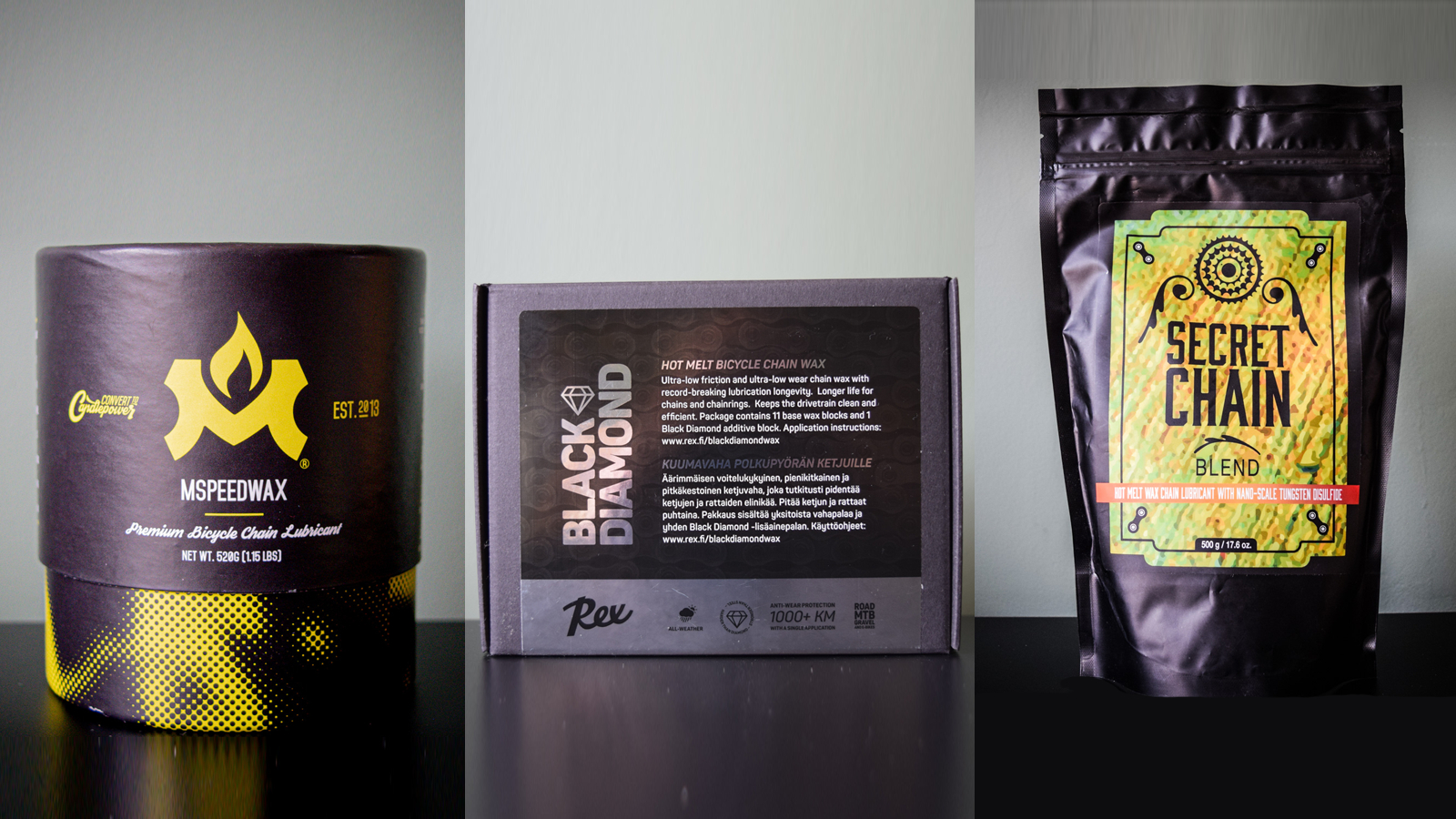
The best hot or immersive chain waxes will produce some of the lowest chain wear rates and will increase the number of miles you can cover for a single chain application. In addition, it can provide excellent drivetrain efficiency and a pretty spotless drivetrain.
Lubricating a chain using hot melt wax is really simple once you have the right setup in place and the benefits can be excellent. Waxing a chain ensures each metal surface of a chain such as the link plates, rollers, bushings and pins are covered in a layer of hard wax. This means there is minimal or no metal-to-metal contact and abrasion which is what wears chains out, accelerated by contamination such as dirt and dust.
Though plenty of people wax their chains already, we often hear that it is too much hassle, a little excessive, or over the top. Changing your cleaning regime and switching to waxing may require some initial investment and effort to learn a new process, but it's something you should at least consider if you want to achieve some of the best drivetrain performance available, saving yourself money and watts. If you aren't particularly good at degreasing and lubricating your chain using a drip lubricant, or if the bike shop tells you your chain is worn out again at every service, waxing may actually be the answer to your problems due to the ability to reset any contamination present in a chain with each fresh re-waxing, dramatically lengthening chain life.
Like in our best chain lube buyers guide, we have included hot wax products that have been independently tested by Zero Friction Cycling. The products here are backed up with data and have gone through a set testing process. We have also completed the application process for each chain wax according to the manufacturer's (and/or Zero Friction Cycling's) instructions and ridden with each wax. At the bottom of the page, we also have some really useful info on waxing and how to wax your chain.
Best immersive chain waxes available today
Best for efficiency
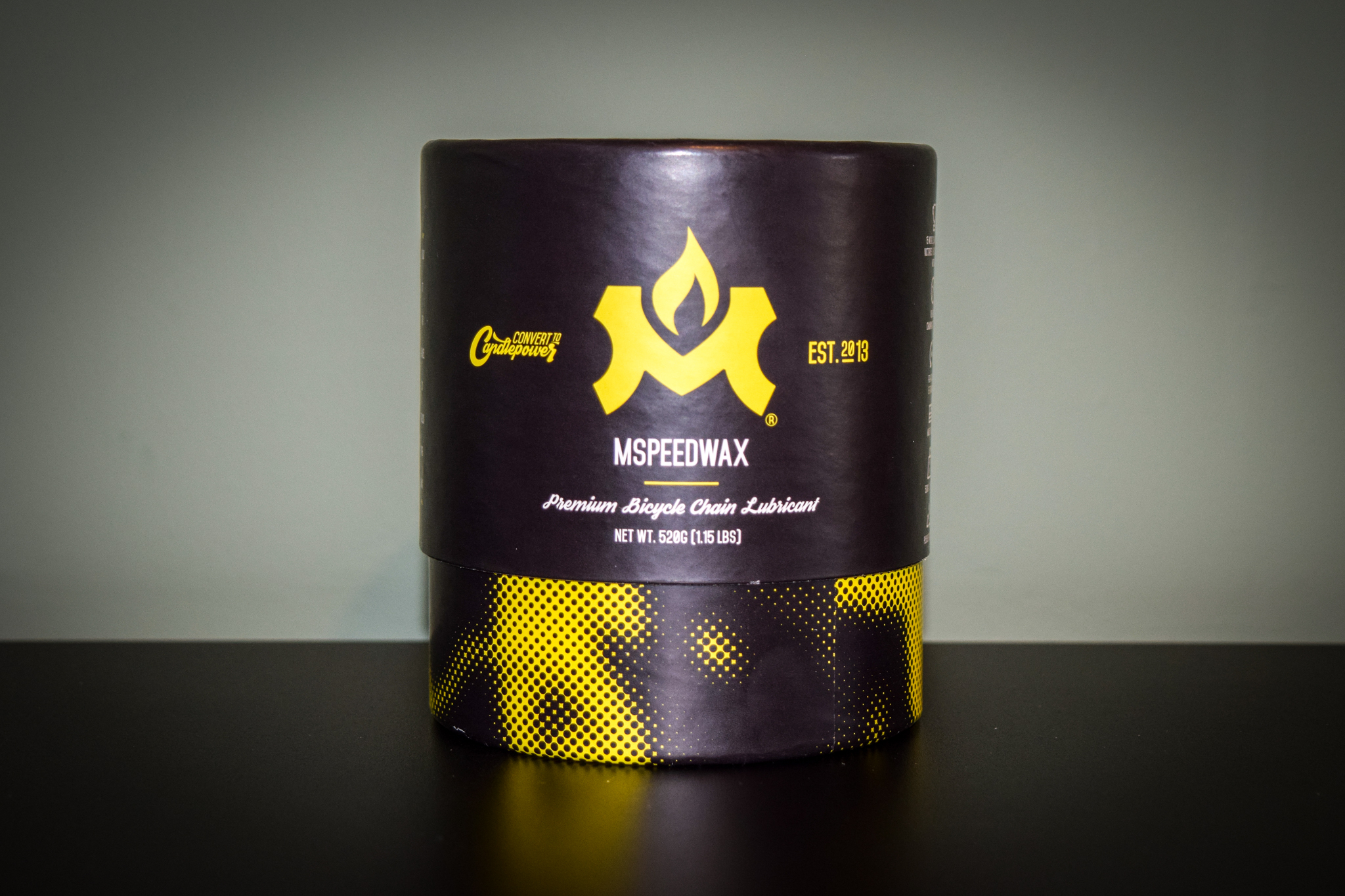

1. Molten Speedwax
Specifications
Reasons to buy
Reasons to avoid
✅ You want a very clean drivetrain: The wax does an impressive job at resisting dust and dirt build up.
✅ You want race proven performance: Mspeedwax has been used to win some of the biggest races and race powder boosts performance.
❌ You want long intervals between rewaxing: Depending on conditions you may need to re-apply often to maintain the best performance.
Molten Speed Wax (Mspeedwax) is based in Minnesota, USA, and started producing wax for bicycle chains back in 2013. Mspeedwax now claims its product has been used to win 15 World Championships and six Olympic Gold medals so far, off the record we know plenty of pro riders use the brand's product.
Molten Speedwax is comprised of refined paraffin, tungsten disulfide and molybdenum disulfide to help keep your chain running smoothly. Sold by the pound, each kit contains two 'pucks' or cylindrical blocks which will treat at least 24 chains. This will keep your drivetrain spinning smoothly for over 5000 miles or 8000 kilometres comfortably while extending the life of the rest of your drivetrain too.
Mspeedwax recommends re-waxing a training chain roughly every 300mi / 480km, or 180mi / 290km for a race chain to help ensure maximum efficiency. Zero Friction recommends re-waxing around every 180 mi / 300km. I'd recommend erring on the side of caution and doing it in shorter intervals.
I have used Molten Speed Wax for a few years on my own drivetrain and switched to the updated current formula when it was released. The large 'pucks' take slightly longer to melt down in a slow cooker due to their size, so choose a day to do your initial melt and wax when you are in no rush. Once waxed, MSpeedwax is completely colourless and runs quietly and smoothly.
The race powder can provide a claimed 6% saving in friction, and the brand says it can be used for around 20 chains. Application is a little bit fiddly and messy though, so I would only recommend it for big events and races that matter to you.
Best for gravel and wet weather riding
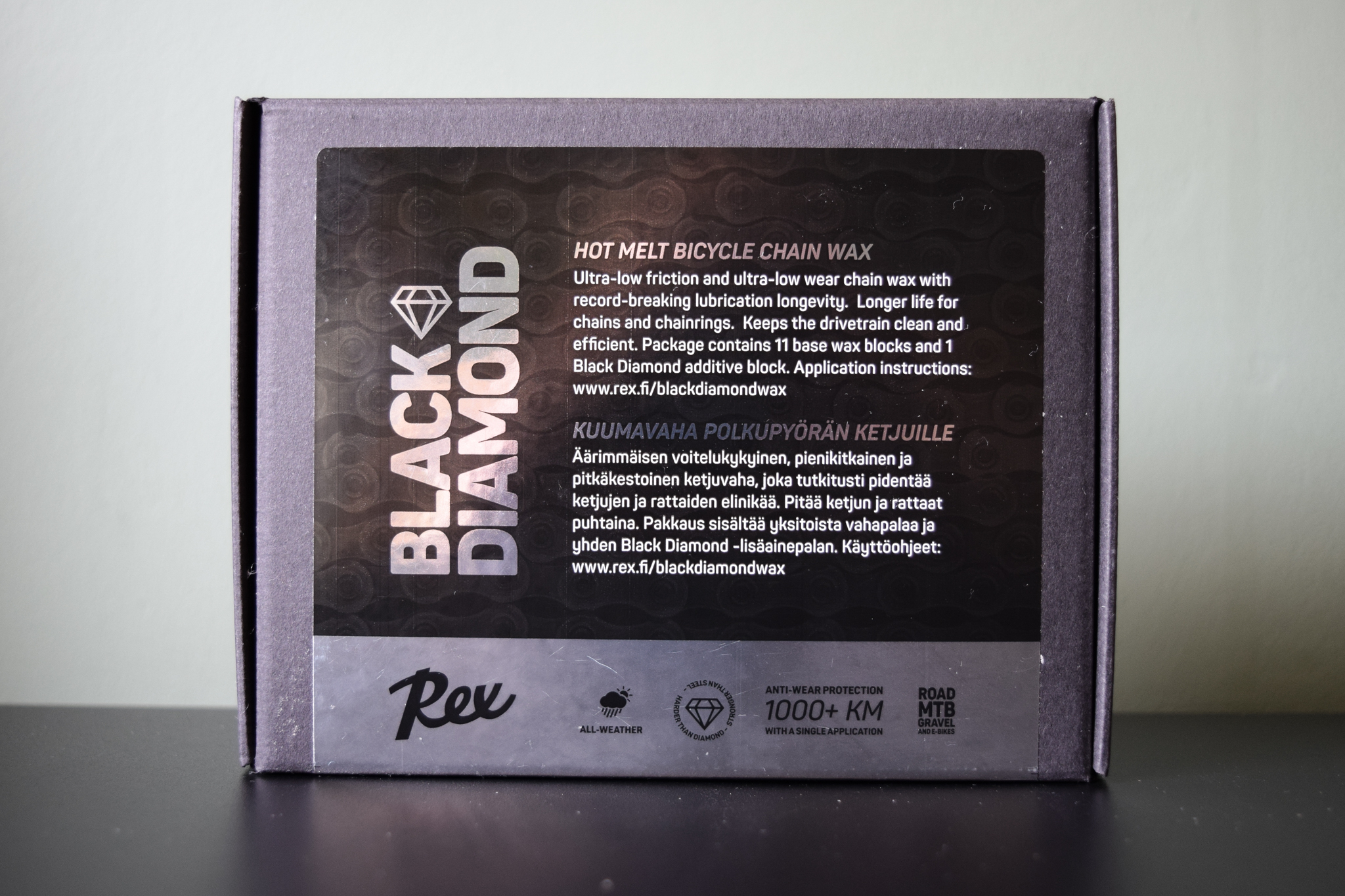
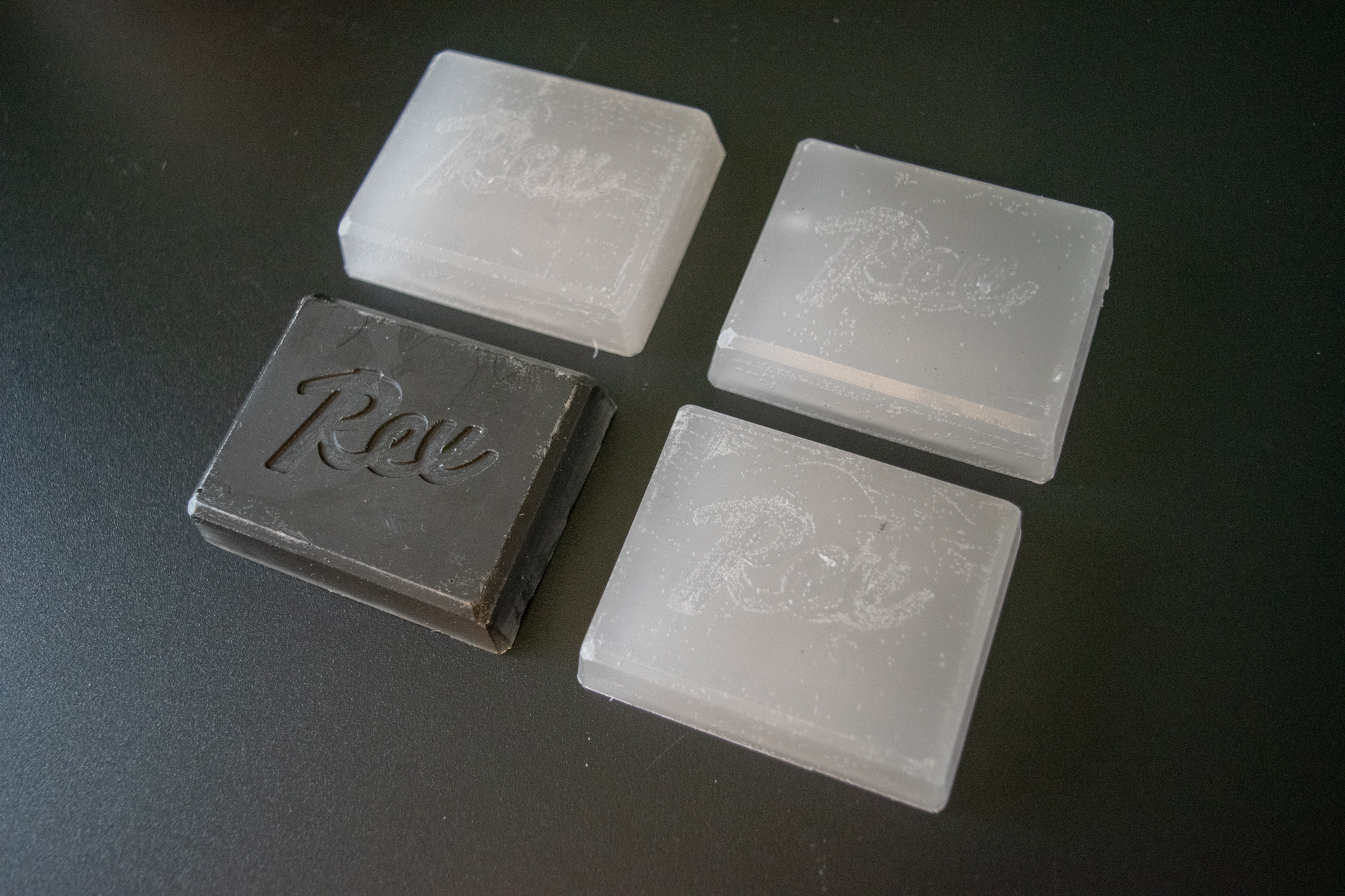
2. Rex Black Diamond Hot Wax
Specifications
Reasons to buy
Reasons to avoid
✅ You want to customize your wax blend: Custom blending allows you to tailor the wax to your needs.
✅ You want long service intervals: The potential mileage between re-waxing reduces maintenance needs and high mileage riders.
❌You want easy ordering: Rex is a little harder to find online in the US and the UK.
Finnish company Rex has been making ski wax for around 70 years, but in 2015 launched a bike products range using the knowledge and expertise gained from ski wax manufacturing.
A box of Black Diamond wax contains twelve square wax blocks. Eleven white wax blocks are a blend of paraffin waxes whilst the single black wax block is comprised of lubricating additives. The individual wax blocks mean you can tailor your own wax blend, something the other waxes in the guide don't offer.
Zero Friction has tested 11+1 (an all-round riding or training blend) and 4+1 wax blends (concentrated, race day mix) This refers to either using all 12 wax blocks or just four white blocks plus the black additive block. Both have performed excellently, particularly in tests simulating off-road and wet conditions with the 11+1 doing slightly better and having a lower cost-to-run ratio. Testing results showed close to 1500km of (indoor) riding on a single application at 250 watts before lubrication wore and the chain wear rate increased. Rex also claims a single application will last up to 1000km (this depends on riding conditions and style), although re-waxing before this mark is probably a good idea.
Like a lot of hot waxes, Rex keeps contaminants at bay and your drivetrain clean which I really like. Like MSW above, the blocks take a little longer to melt down, so choose a day when you aren't in a rush to ride and enjoy the benefits of wax.
Rex could be an excellent option if you like the idea of waxing but think you might prefer longer periods before you need to re-wax.
Best for protecting your drivetrain
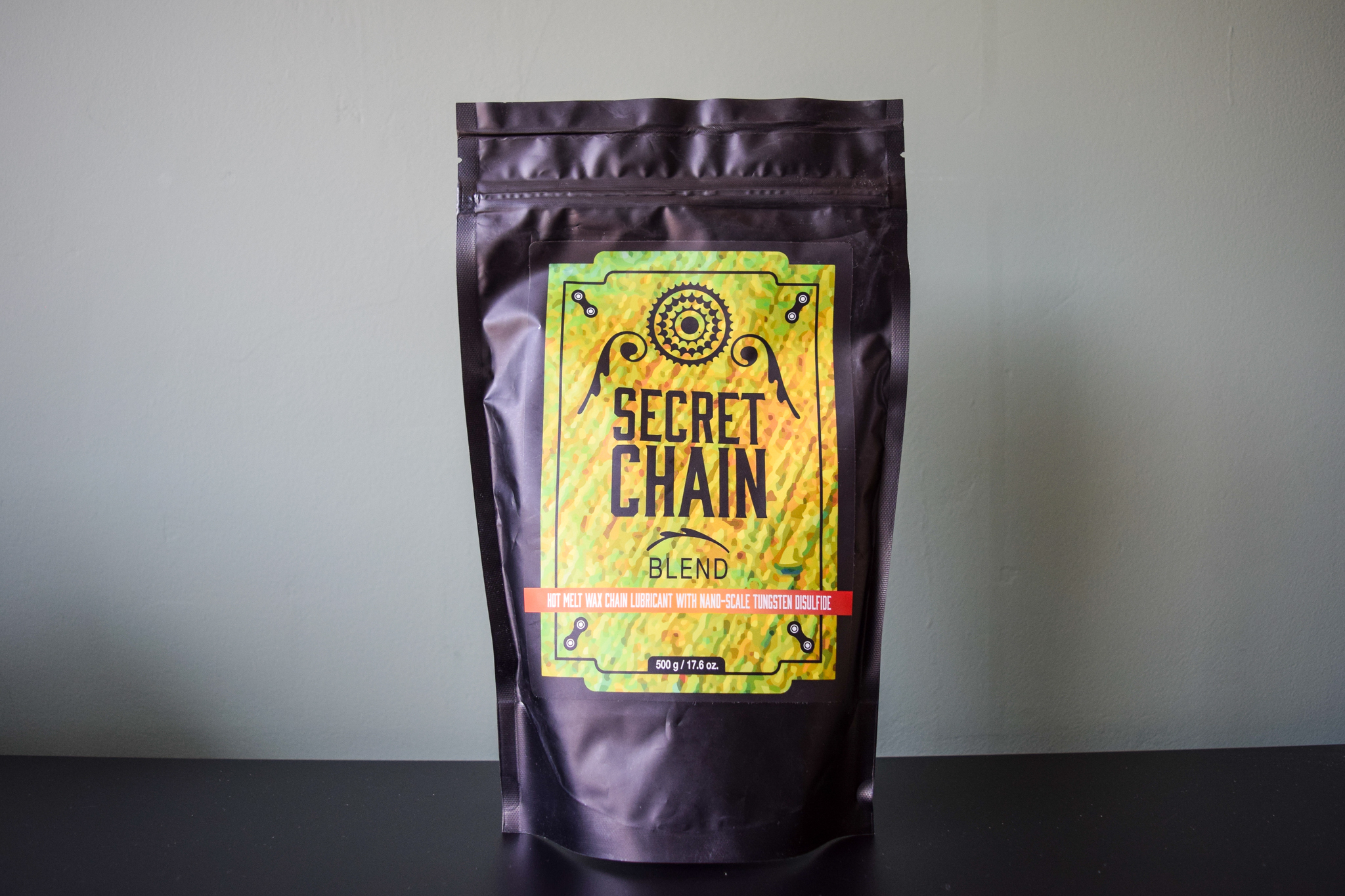
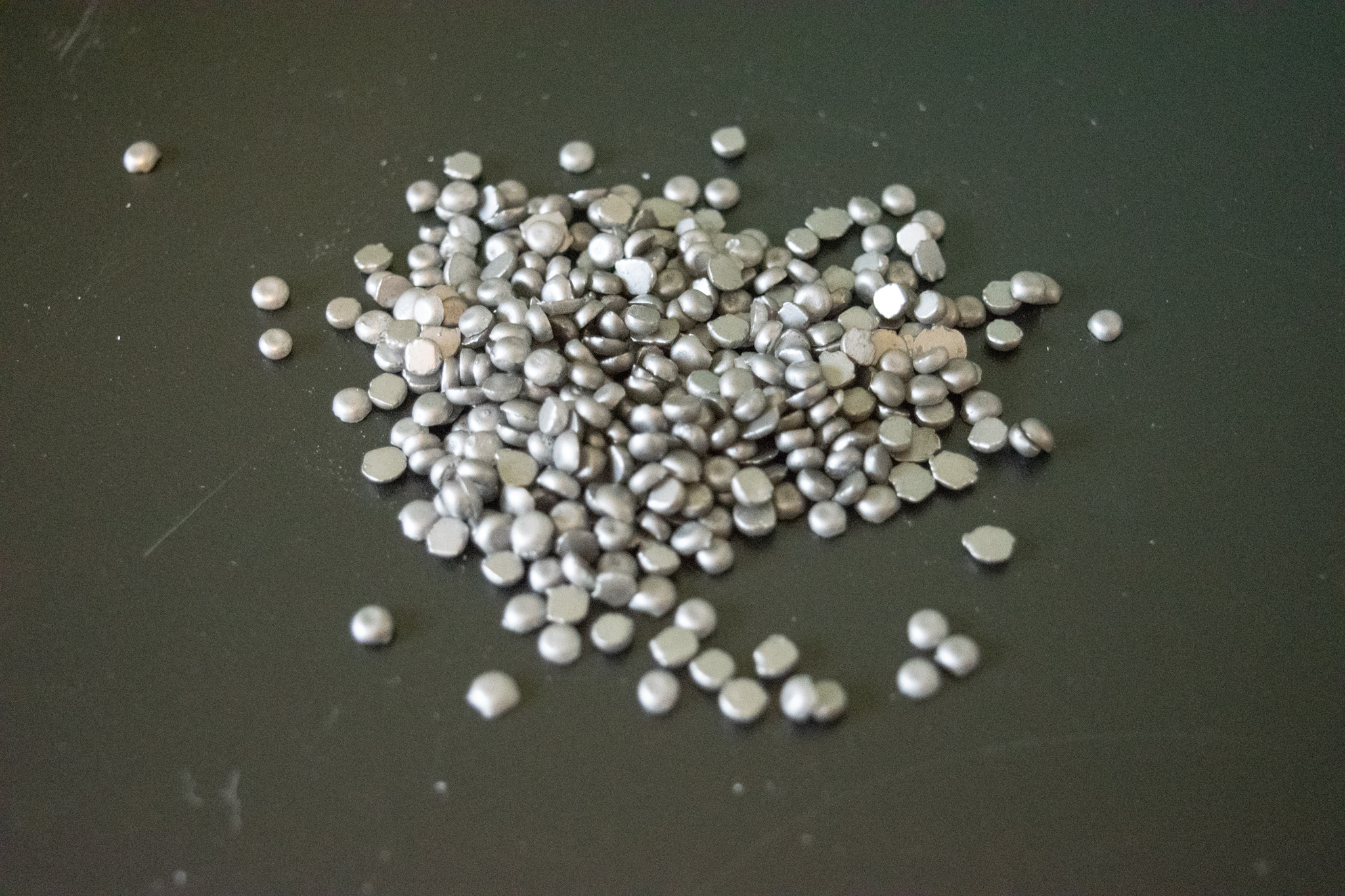
3. Silca Secret Chain blend - Hot Melt Wax
Specifications
Reasons to buy
Reasons to avoid
✅ You want to protect your drivetrain: The Super Secret chain wax offers impressive longevity and reduces drivetrain wear.
✅ You want an easy application process: No need to buy a slow cooker, simply melt the wax within its bag and immerse the chain.
❌ You want an affordable start to waxing: The initial outlay is high although the longevity and reduced component wear arguably saves money in the long run.
The Silca Secret chain blend uses highly refined paraffin and a high concentration of three specific sizes of nano-scale Tungsten Disulfide to provide its chain protection and coating. It's claimed to be the fastest chain wax coating currently on the market, this finding was published when CeramicSpeed released its UFO drip lubricant and carried out a lubricant dry conditions test over a period of hours monitoring wattage losses.
Silca takes a slightly altered approach to wax and advocates the use of its overall 'wax system' for best results. The secret blend waxing system allows for both the secret chain blend hot melt wax and super secret chain drip lubricant to be used in tandem, they share the same formula but the drip lube is contained within a carrier which is water. This allows you to 'top up' your chain in between immersive waxings. This is designed to really maximise the amount of wax in the chain, improving performance and lubrication and keeping it running quietly as waxed chains can sound a little bit louder. Though of course, you can just use the immersive wax on your chain.
I melted the wax in a slow cooker but a nice feature of the Silca resealable plastic sous vide pouch means you can also just place the bag with wax and your chain inside into hot water and melt the wax that way, then all you need to do is remove your freshly waxed chain and you are ready to ride. I tend to stick to my slow cooker however (pictures below) and keep the wax out of the kitchen. To get the best results when waxing you need a clean chain, Silca further simplifies the waxing process with its StripChip which saves you from having to remove the factory grease from a new chain, removing a step and speeding up the process.
Do it yourself options
It's possible to create your own wax blend at home by buying paraffin and the relevant friction modifiers. People claim to have achieved excellent results from their own home blends.
However, it is worth noting that the manufacturers in this guide use the very best quality components available in their wax blends. Such as very high-quality paraffin. They have also done a great deal of testing to arrive at their final product or paid for rigorous independent testing to be carried out.
However, if you are that way inclined and fancy making your own, a custom home wax blend is possible.
How to choose the best chain wax for you
Immersive chain waxing presents a huge improvement in performance compared to some of the worst drip lubricants out there. As such, you're going to be giving your drivetrain and chain a far better fighting chance with waxing, saving watts and extending chain life.
There is some really in-depth testing and data-backed research out there if you really want to dig down into the nitty gritty of each hot wax, but making the jump to waxing is a clear advantage in itself.
How do you wax a chain?
Once a chain is correctly prepared and cleaned (covered below) it's simply a case of installing your chain onto an implement to swish it in the melted hot wax in your slow cooker. A bent spoke works excellently, but Mspeedwax also makes its own 'swisher tool' which also works very well. Silca also gives you the option of waxing the chain in the bag.
Turn the slow cooker on and place the chain on top of the solid unmelted wax inside, wait for it to melt and swish it around in the wax which should be between 70-90 degrees. A slow cooker on low will take care of this but you can invest in a cheap thermometer to check. Remove the chain and leave it hanging to dry (wear gloves for this, because melted wax is hot, and will quickly dry onto your hands). Once the chain has dried, bend the chain to break the solid wax bond from the hardened wax and you are good to go. Breaking the chain links free takes a few minutes as the chain will be totally rigid post-waxing. It's a really simple process and with practice becomes second nature.
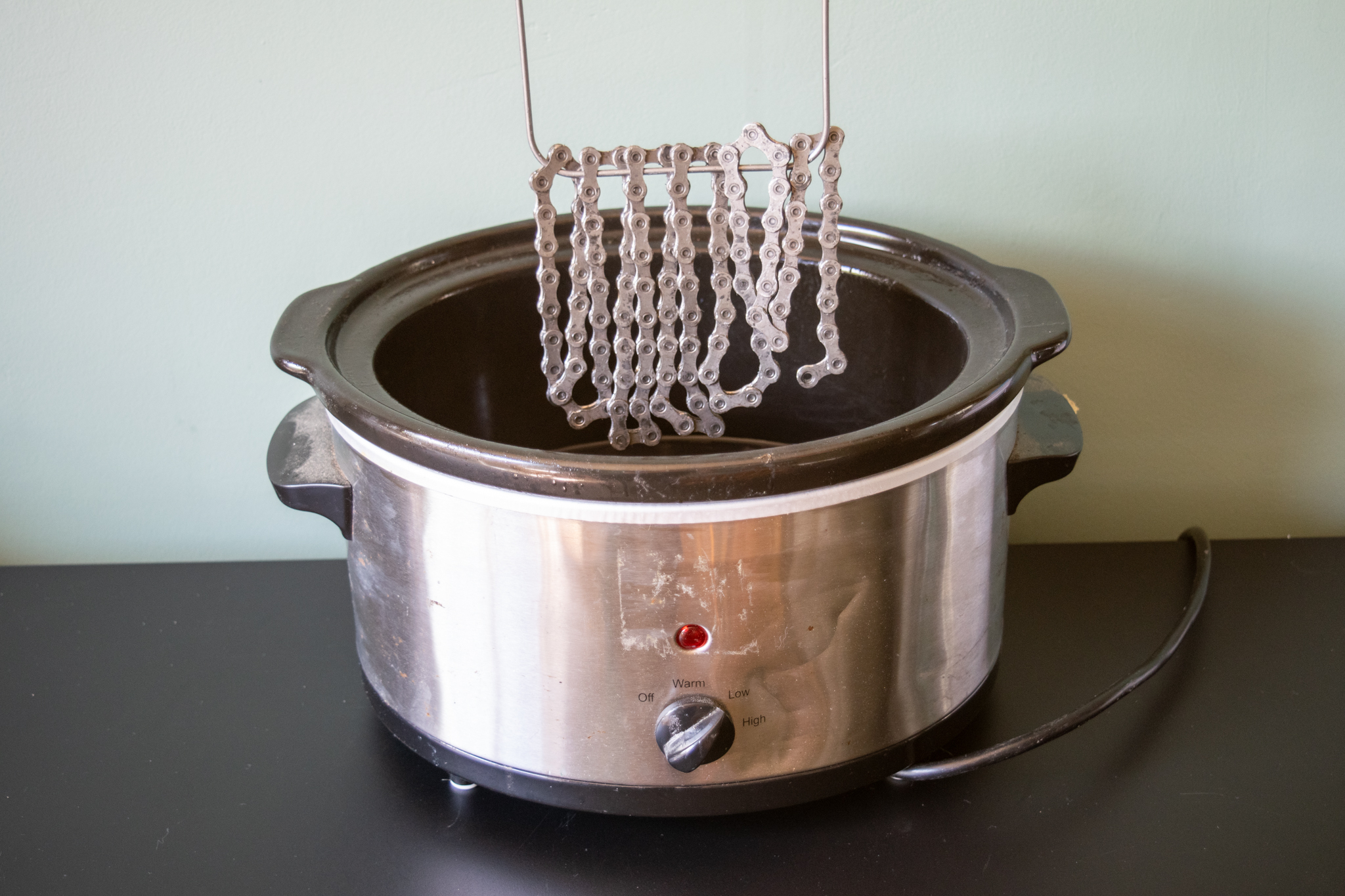
How do you prep a chain for waxing?
The prep before waxing is the most time-consuming part of the process and needs to be carried out correctly. This only needs to be done once, to ensure the chain is completely clean. It is much easier to clean a brand-new chain compared to slogging away trying to degrease a filthy, used chain and trying to bring it back to an acceptable point.
Different manufacturers have slightly different cleaning processes and instructions so it is worth checking these depending on which wax you use. Zero Friction also has an excellent prep guide.
The factory chain coating or grease needs to be stripped from a new chain as well as the small metal filings from manufacturing that will be in the chain from the packet. If you've never done this before you may be surprised at what comes out of your new chain. An overnight soak and a few rounds of agitating the chain with white spirit or mineral turpentine will help strip down factory grease and get a chain clean. A final flush or two in isopropyl alcohol, wipe and leave the chain to dry and it is ready for waxing. Having the chain clean and dry will help wax adhesion to the chain.
It's absolutely fine to do this with sealable plastic containers, an ultrasonic cleaner is not essential for home waxing. Good ultrasonic cleaners are also quite expensive, so containers will do the job for a lot less. I've used an old jar and Tupperware tubs to carry out my initial chain agitation clean. Just make sure the container has a good seal so you don't shake chemicals all over yourself.
What will I need if I want to switch to wax?
To switch to waxing, the equipment you will need is:
1. A slow cooker (I got a cheap slow cooker online for £10).
2. A piece of wire or similar to hang your chain on and swish it in the melted wax (a spoke from the local bike shop can be bent and is perfect here)
3. Some containers for chain preparation
4. Chain power link removal pliers
5. Isopropyl alcohol and white spirit or mineral turpentine, these names may vary depending on where you are in the world.
6. Finally, a pair of gloves to protect your hands from hot wax and some eye protection is always a good idea.
Is waxing more expensive overall?
The cost of wax and the equipment needed to switch to a waxing setup at first may involve some outlay, and at times is a perceived barrier for people.
Modern drivetrains are expensive, especially higher-end ones. If a chain and cassette are worn out after a year of riding due to a poor lubricant choice (which you will also use more of) and minimal drivetrain cleaning, the cost of replacements will be several times the cost of a bag of wax and a cheap slow cooker and some containers.
Can I re-use my master chain link?
Removing your chain to re-wax means taking it off the bike and disconnecting the master or power link. Lots of manufacturers including Shimano state that its master links are single-use only. Which in theory means you would need a new master link every time you wax. The YBN QRS-11 master chain links (Campag, Sram, Shimano compatible) can be used up to five times which is a plus point.
I personally have re-used the same Shimano chain master link multiple times and never had a problem but this is something to point out.
Do I need to clean my chain in between waxings?
If you're riding in the dry, you should only need to prep your chain once, then you can just re-wax as required. The old wax will melt off in the slow cooker and new fresh wax will recoat your chain.
Contrary to the assumption of most, there is an argument that cleaning your chain with boiling water before re-waxing may be detrimental to chain wear, as water contains chemicals which are also then thrown into the mix. However, many people use the boiling water method and it's generally accepted to be ok.
If you get caught in the wet or ride in dusty conditions etc, a flush with hot water before waxing will be beneficial to minimise the amount of contamination entering the wax itself. That's it.
Will my drivetrain sound different once my chain is waxed?
A waxed chain will sound a little different to a chain with a wet drip lubricant applied. There is a slightly different noise, it's not loud but just a by-product of the chain being covered in hard wax rather than being deadened by a wet lubricant. This is normal and nothing to be concerned about.
It also makes it easier to hear when the chain sound changes slightly, an additional indication you may need to re-wax.
Is hot wax better than chain lube?
Pretty much across-the-board, immersive waxing is more effective at protecting a chain and drivetrain than a wet drip lubricant from a bottle. The hard and dry wax coating minimises the amount of contamination that can be brought into a chain, thus protecting it. A wet chain lubricant on a muddy or wet ride has the potential to attract and hold onto far more contamination which can start to wear a chain quickly. Wax is also a great option for muddy and wet rides.
Subsequent re-waxes of a chain (after correct initial preparation) reset contamination levels in a chain again, this is where the real benefits of immersive waxing start to become apparent. Your chain and drivetrain will also stay super clean and dry.
How long does hot wax last?
Most hot wax applications will last several hundred miles or kilometres. It's in your own interest to stay on top of re-waxing, so erring on the safe side and doing them before they exceed any recommended intervals will protect your chain from potential wear once all the protective wax has worn off.
Waxed chains can start to sound dry but still be protected. If you think your chain is sounding dry take it off and re-wax it sooner if you wish. I keep an eye on the miles I've covered on Strava and wax to these intervals but always inside the recommended periods.
How do I remove my chain?
Most 11-speed chains and above will come with a connector or 'power link'. This is a removable chain link that allows you to easily connect and disconnect the chain compared to splitting it using the more traditional method of pushing out a chain link pin with a tool. If your chain doesn't have a power link, a bike shop can easily install one for you for a few pounds/dollars.
From here, removing the chain from your bike is really easy. All you need is a chain master link removal tool. The tool looks very similar to a pair of pliers and easily pops open the Power Link in your chain. You can pick some up for a few pounds/dollars.
How do we test?
Testing is the backbone of the tech department at Cyclingnews and how we test is taken seriously, so read on to find out more.
Testing chain wax is a fairly lengthy process and one that takes time. That's partly why we also include testing results from an independent business like Zero Friction Cycling.
For each wax we test, we need to start with a fresh chain. Cleaning an already used, dirty or worn chain for waxing is a fool's errand and means it's difficult to measure chain wear properly.
Once we have our new chain we strip the factory coating and or lubrication from it in the multiple stages that we have outlined above. We then wax it in a slow cooker using our desired wax after reading the manufacturer's recommended waxing instructions.
Once the chain is waxed we then install it to a bike and start riding! One of the most important things in wax testing is measuring wear, we use a Shimano chain checker tool to measure chain wear over hundreds if not thousands of miles, to work out if the wax is doing what it says on the tin.
Aside from checking chain wear, we pay attention to how the wax is to live with, how clean it keeps the drivetrain components, and how it sounds in use when we are pedalling.
The latest race content, interviews, features, reviews and expert buying guides, direct to your inbox!

Tom joined the Cyclingnews team in late 2022 as a tech writer. Despite having a degree in English Literature he has spent his entire working life in the cycling industry in one form or another. He has over 10 years of experience as a qualified mechanic, with the last five years before joining Cyclingnews being spent running an independent workshop. This means he is just as happy tinkering away in the garage as he is out on the road bike, and he isn’t afraid to pull a bike apart or get hands-on with it when testing to really see what it’s made of.
He has ridden and raced bikes from an early age up to a national level on the road and track, and has ridden and competed in most disciplines. He has a keen eye for pro-team tech and enjoys spotting new or interesting components in the wild. During his time at Cyclingnews, Tom has already interviewed some of the sport's biggest names including Mathieu van der Poel, Tadej Pogačar and Alberto Contador. He's also covered various launches from brands such as Pinarello, Ridley, Specialized and more, tackled the Roubaix Challenge sportive aboard his own rim-brake Cannondale SuperSix Evo, tested over 20 aero helmets in the wind tunnel, and has created helpful in-depth buying advice relating to countless categories from torque wrenches to winter clothing.